Around this time of year, young ballerinas are lacing up their pointe shoes, poised and prepared to dance The Nutcracker. The classic ballet, which is over three centuries old, premiered on Dec. 6, 1892, by order of Czar Alexander III in St. Petersburg Russia. Based on Alexandre Dumas‘ adaptation of E.T.A. Hoffmann’s The Nutcracker and the Mouse King, it was originally choreographed by Marius Petipa and Lev Ivanov with a score by Pyotr Ilyich Tchaikovsky.
Celebrating 130 years, the most famous holiday rendition features the New York City Ballet performing George Balanchine’s The Nutcracker. It’s a two-act story told entirely through dance, featuring a cast of characters including toy soldiers, mischievous mice, and dancing snowflakes, delighting an audience of children of all ages.
Jennifer Weber (Z-O-M-B-I-E-S 2), an Emmy Award-winning choreographer based in New York City and Los Angeles, envisioned a much more modern version of this timeless tale, so she created The Hip Hop Nutcracker, which is currently streaming on Disney+. Weber also served as Choreographer of The Hip Hop Nutcracker, which made its debut as a live theatrical production featuring rap legend Kurtis Blow and has been touring across the U.S. since 2015. Weber also recently added her signature hip-hop moves to another classic, Romeo & Juliet, which she re-imagined in the Broadway show & Juliet.
Below the Line spoke with Jennifer Weber via Zoom video from her home in New York. Filled with boundless (and infectious) energy and excitement, Weber discussed her passion for infusing classic ballet with hip-hop language to reach a new, more diverse audience. She knows both worlds well, as she has worked with NYC Ballet principal dancer Tiler Peck, and considers Mikhail Baryshnikov a friend. In fact, both of them make appearances in The Hip Hop Nutcracker, along with a bevy of alums from Fox’s So You Think You Can Dance.
[Editor’s Note: The following interview was conducted prior to the death of Stephen “tWitch” Boss, and we here at Below the Line offer our deepest condolences to his family and friends for their devastating loss.]
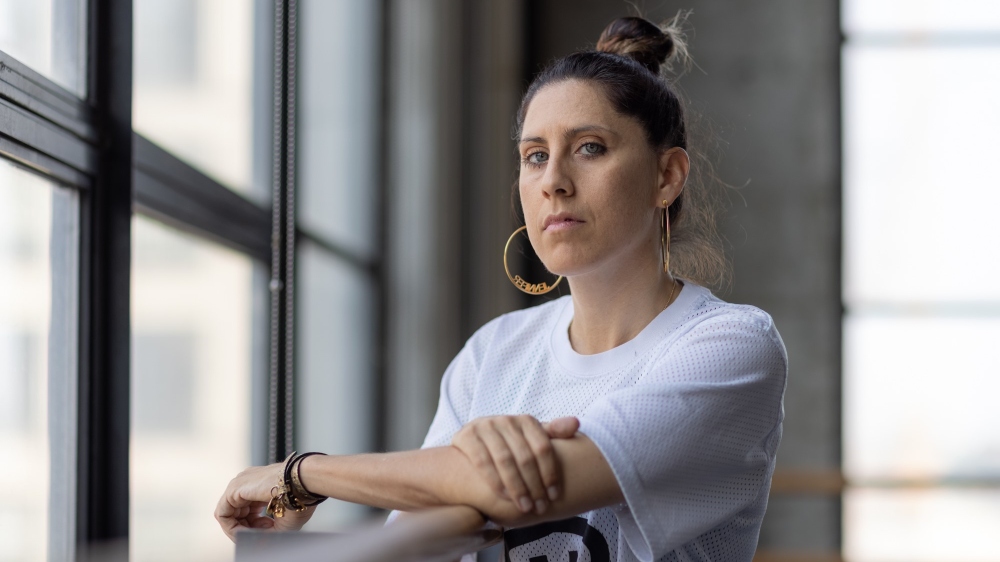
Below the Line: Take me back to the beginning. How did this mash-up of classic ballet and hip-hop come about?
Jennifer Weber: I live in New York and I ran an all-female hip-hop dance company for many years, and we started experimenting with what would happen when you mixed hip-hop with classical music — mostly in an attempt to kind of, like, push hip-hop in a different direction. You know, hip-hop music is so predictable because it’s a repetitive beat and songs have a specific type of structure. But with classical music, it’s so many waves with different tempos and different instrumentations and different time signatures and all these things.
BTL: How did you realize that idea with The Hip Hop Nutcracker?
Weber: I got really excited about working with hip-hop and classical music, and at the same time, I was sort of asking why, like, in theater, people are always reimagining the classic text, specifically Shakespeare. There are a million versions of Shakespeare, but there aren’t a million versions of the classic text of dance, [and] I thought those two things kind of came together. I was experimenting with a lot of different things and I was doing this piece to Vivaldi‘s Four Seasons, and I pitched it at a theater that was very, very big, called The United Palace in Washington Heights here in New York. The head of that theater said, ‘I don’t know about Vivaldi, but what about The Nutcracker?’
And then my mind just like exploded because I ran a very small company that only had six dancers. The Nutcracker is a big piece, but I love a good challenge. And I was like, ‘Yes, I’m in. Let’s do it!’
BTL: So how did you adapt the stage show The Hip Hop Nutcracker for Disney+?
Weber: It started as a stage show. The Hip Hop Nutcracker was a live show that I created. It’s on tour right now, and it’s been on tour since 2015. I partnered with Done + Dusted and Raj Kapoor and we took it out as a TV project. I always had this idea that The Hip Hop Nutcracker could be more than a stage show, and that it would be amazing to actually be able to create the locations where the show takes place. So we put this pitch together, took it out, and Disney came on board.
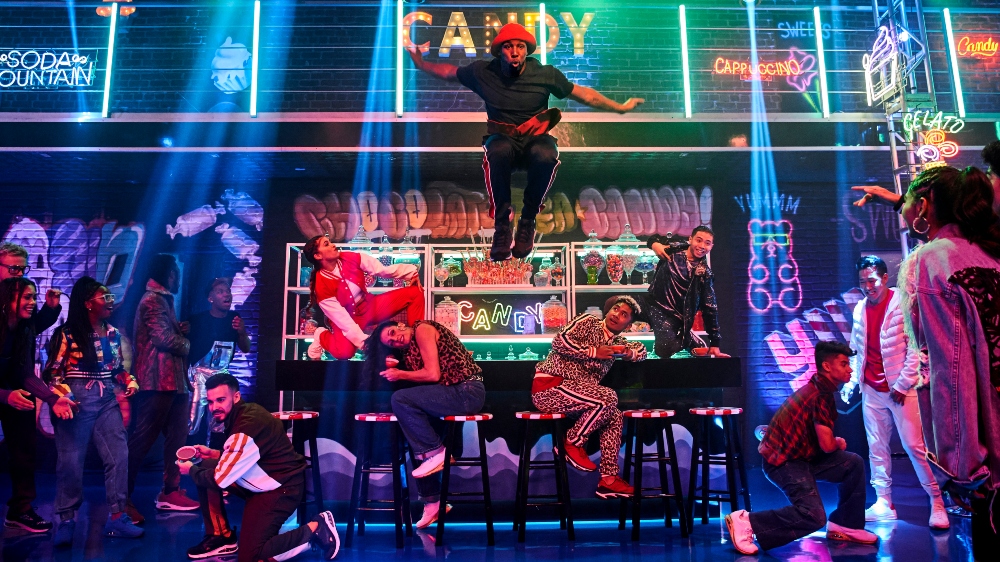
BTL: How did you assemble your cast of dancers? It seems as though many of them come from So You Think You Can Dance.
Weber: We started like thinking about who would be the ideal cast for this. There’s this mom and dad relationship in the show and it had to be tWitch (Stephen Boss) and Allison [Holker Boss], (who were married in real life) to be the anchor of the show. What was so crazy is, like, in the show, the mom and dad sort of meet on the dance floor and fall in love instantly. They said to me that that is actually their story of how they met. I’m pretty sure it was a So You Think You Can Dance party and they met on the dance floor and they locked eyes and they started dancing together. It’s [a] totally amazing [story].
BTL: Indeed. So you got them on board and then you went to other dancers from the show like Comfort Fedoke and Dushaunt Fik-Shun Stegall, right?
Weber: One of the creative partners is NappyTabs and (choreographer) Tabitha [Dumo] had a lot of those contacts and I had a lot of contacts. Between the two of us, we pooled our contacts because when you’re doing a big project, it’s so great if you can employ people [who] you already know you love to work with or have that shorthand with because when you do something like this it’s so fast and [you] wanna be able to really rely on your cast to give it their all. Even if it’s four in the morning, which it often was ’cause we shot this over [many] nights. So yeah, between Tabitha and I, we made a list of our dream cast, [which was] basically the So You Think You Can Dance cast.
BTL: There was a contestant on So You Think You Can Dance who does crazy double-jointed moves with his arms, and I love that you cast him as the Jack in The Box.
Weber: That style’s called bone breaking. He goes by Slick (Nicholas Stewart). I mean, he’s incredible. He’s danced with a lot of amazing people, really big pop stars. He’s such an incredible mover of this very specific sort of style, which falls under the big umbrella of hip-hop. We wanted to represent as many styles of hip-hop as we could.
BTL: Talk about the various styles of hip-hop that are in The Hip Hop Nutcracker.
Weber: That’s one of the things that’s so cool about The Hip Hop Nutcracker that’s really different than the ballet. In the ballet, everyone’s using the same movement vocabulary, but in The Hip Hop Nutcracker, we’re using all different vocabularies, you know? For instance, for the mice, we really wanted people who had more of like a B-boy vocabulary. And then the soldiers have their own style. There are so many, like, little worlds of hip-hop and we wanted to celebrate as many as possible.
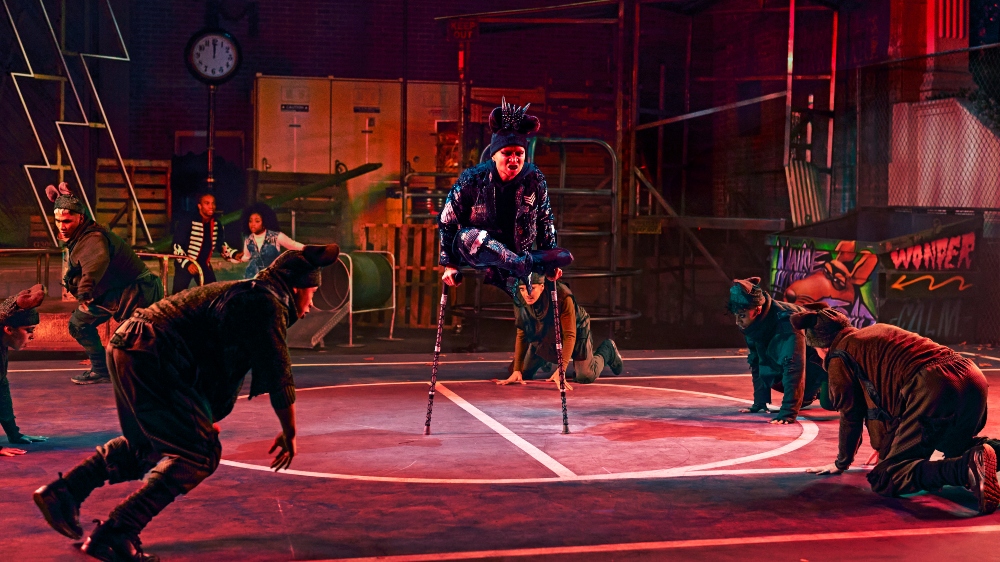
BTL: Speaking of that, you even have a one-legged dancer on crutches.
Weber: Jean Sok, who plays the Mouse King. He is an amazing dancer and we felt like there are so many ways that you can make dance your own. Having someone who dances with crutches, who might not be who you would think of as a star of a dance film, it’s so important showing that to people. I think it’s just not something people get to see and I think about any kids who might have similar situations and [how] being able to see that is so inspiring. Even if it’s nowhere near your own personal experience, just to watch what he can do, and he’s just dope all on his own. It just shows you how much you can put yourself in this vocabulary and in this world, and that there is space for everybody to find their voice in it, which is beautiful.
BTL: Let’s talk about those different styles where sometimes you’re even incorporating classic dance with hip-hop where you’ve got the guys up on their toes at certain points. You’ve got them doing leaps and then all of a sudden they’re spinning on their head.
Weber: I always think of hip-hop as a culture based on samples and if you go all the way back to the roots of hip-hop, people were sort of inspired by all different dance styles. They were taking movement from martial arts and putting their twist on it. So of course hip-hop dancers are also gonna be taking inspiration from ballet because there’s so much amazing movement in the umbrella of ballet that people wanna pull from and put their own twist on, you know? That’s what’s so great about hip-hop — it’s alive. It’s not, like, a confined vocabulary. It’s a vocabulary that is continuing to grow and evolve and it’s got a very pure, very true root in what it is. And then it’s got this expansion and there’s something about choreographing solos versus choreographing the group.
BTL: So talk about those dynamics of choreographing a solo vs. the ensemble.
Weber: Yeah, it’s completely different, right? When you’re working on a solo moment, it’s really like a collaboration with the dancer. I feel, as a choreographer, it’s always so important to bring out what makes somebody special, especially if it’s a solo. You bring out what makes them magic. So when I’m working with someone like Fik-Shun, (as the titular Nutcracker) what’s coming to mind is that key moment of the narrative where he gets these magical shoes, and at first, the shoes are kind of controlling him and it’s almost like he has brand new legs and he doesn’t know how to move with them. And then throughout the course of that solo, he’s gaining control of the shoes and getting control of the magic and gaining control of his movement. That’s like turning him into a dance superhero. It’s about hitting those key narrative marks and then letting the dancer translate that into their vocabulary, because no one can do Fik-Shun better than Fik-Shun.
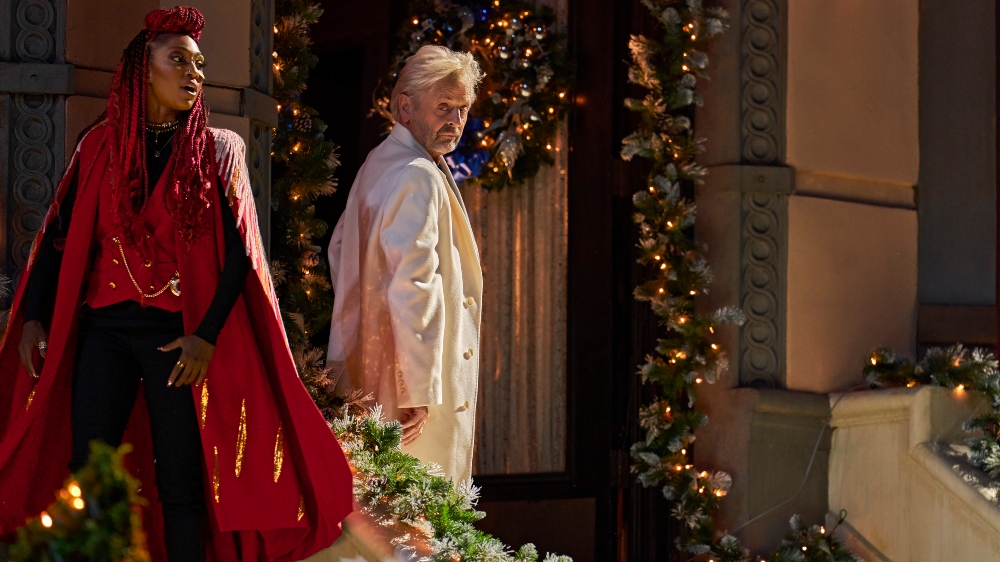
BTL: How did you come to cast classical dancers like Mikhail Baryshnikov (aka Misha)? He’s quite a get…
Weber: In a kinda crazy, roundabout way, Misha had watched a video of the stage version of The Hip Hop Nutcracker about two years ago and he had reached out to me ’cause he loved it so much. He had invited me to create some new work for his art center (BAC) here in New York. So I started working on a commission from him, which incorporated dancers from New York City Ballet, including Tiler Peck and some amazing hip-hop dancers, and trying to experiment with what would happen with classical ballet dancers and hip-hop dancers creating work together.
Through the course of that project, I became friends with Misha. So when this project happened, I literally just called him up and said, ‘Do you wanna come to LA and work on The Hip Hop Nutcracker?’ And he was like, ‘Absolutely.’ That was so much fun. I will say Misha and Comfort (Fedoke), who plays Drosselmeyer, were like two little peas in a pod. They have such similar energy and a desire to expand the mind of creativity. They approach everything through character and storytelling, and just working with the two of them at once was just a total dream come true, and it was something I’ll never forget.
BTL: How did Baryshnikov take on the hip-hop choreography?
Weber: If you look back at some of his early work, specifically in White Knights, which was choreographed by Twyla Tharp, you can definitely see a lot of hip-hop influence. You can tell Twyla Tharp was definitely influenced by what was going on in New York in the ’80s in that movie, in that choreography. I think Misha is somebody who literally can embody anything. He’s such a master of movement. He will, like, take it and give it his own flavor. Watching him take something that I give him and then seeing [how he] Mishafies [it], it’s so interesting. He gets at the essence of what the feeling is in such a special way.
BTL: What inspires you, and how do you use dance to tell the story?
Weber: There are so many inspirations. We had a whole team of people working on this project. The thing that [is] most inspiring to me about The Hip Hop Nutcracker is how we can use dance to tell a story and to create character. That’s what’s so exciting because I think often people think of hip-hop as more of like an energy as opposed to a narrative. But when you really look back at the roots of hip-hop and the idea that back in the day, and to this day, like when people battle, they create a character. They create a new name for themselves. They try to create moves that only they can do. It’s like they’re becoming this [new] kind of version of themselves. That sort of fits so well into narrative and storytelling, so for me, that’s the inspiration. The inspiration is always gonna be about how do we tell this story.
I think about working with Cache [Melvin, who plays Maria-Clara] on her solo, which is all about this moment where her parents are fighting and it’s killing her vibe and it’s stressing her out and she escapes into her headphones. It’s [about] how to embody that feeling because, unlike the Fik-Shun solo, which is very much about hitting narrative points, Cache’s solo is about hitting emotional points. I love that challenge. How are we gonna use the movement to be super clear that we’re hitting these emotional points versus narrative points so that the audience is on this journey with the cast?
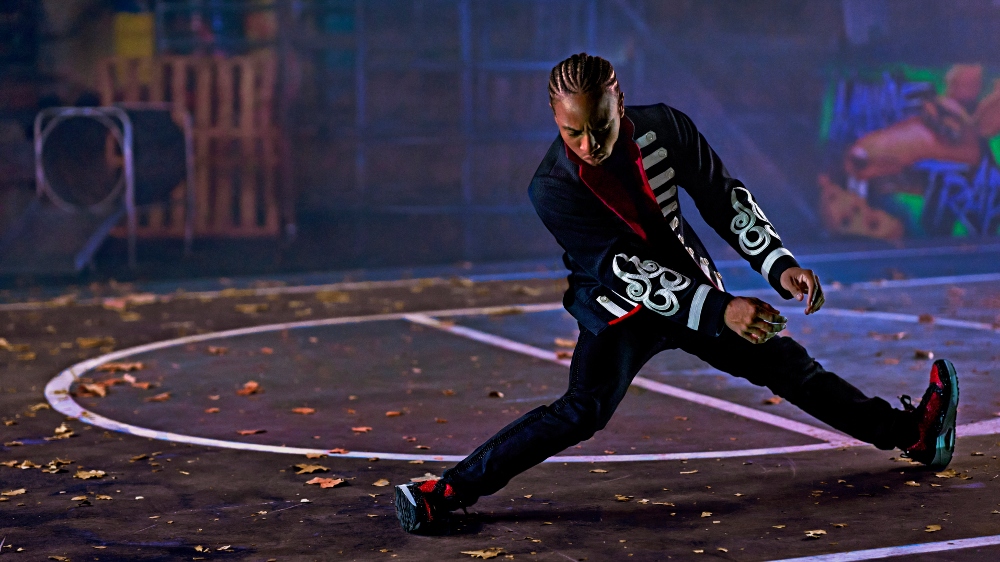
BTL: Are you choreographing in the moment or do you have your steps already planned out?
Weber: It’s both, you know. It really also depends on the project. With certain projects, you have to come in with every single step, with every single formation, because you’re on such a tight time crunch, and [with] some other projects you have more breathing room. I work a lot in theater as well, and that has more of an in-the-room inspiration kind of feel. It’s so specific to the project and also so specific to who you’re creating it for, and what is that moment, and whether you’re coming in with all the steps or you’re coming in with the concept and seeing how that concept relates to the dancer. I love working in all those ways. I think that’s one of the really fun things about being a choreographer — you don’t always work in the same way.
BTL: What were some of the challenges that you might have come across while you were choreographing this?
Weber: The challenge, always, in film, is time — especially a project like this, where we shot this over five nights, which is a lot of material to film per night. When you’re fighting the sun coming up, there’s nothing like that feeling. One of the other things that’s so challenging about filming dance, not on a stage, is the floor. That’s just always a reality. For instance, working with Tiler in her solo moment, we knew she needed to be on a marley floor because she was gonna dance on pointe. And when we built the floor, it was actually, like, four sections, like a circle that went together. But because of that, no matter how hard we tried to make them completely flat, it’s four sections that aren’t like the floor at New York City Ballet. So you have to improvise when you get to that moment.
Or, even in the big battle between the mice and the soldiers, we had this rolling bench, and then the bench wouldn’t roll. So we had to put other types of gliders on the bench so that it could roll. Then it was too slippery and then we had to hold it. No matter how much you rehearse in the studio, when you get on location, you know there are just gonna be challenges you didn’t see coming. You have to be so quick with the solve and you have to have a team that is all on board.
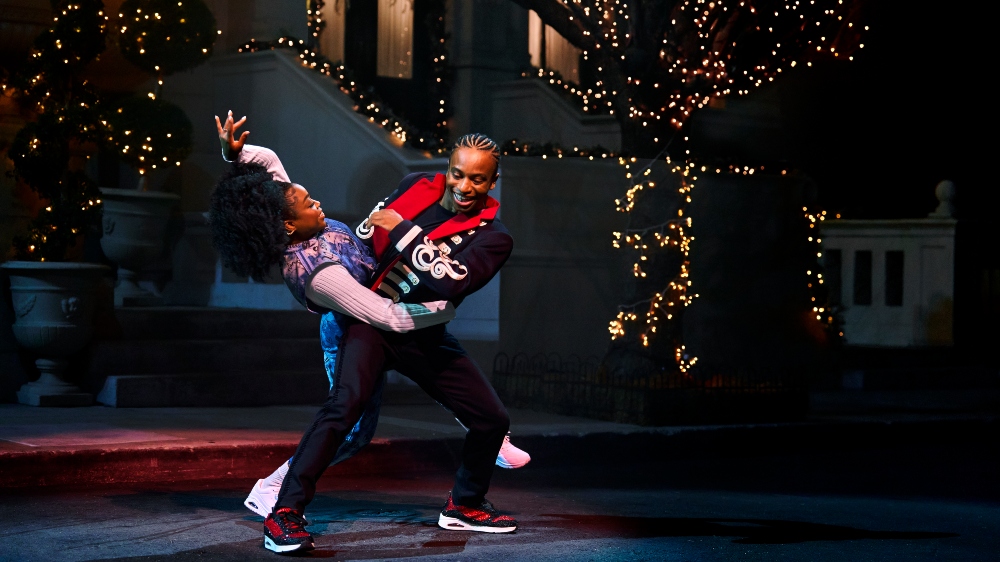
BTL: Would you say the Broadway show & Juliet is fulfilling your credo for combining classical movement with hip-hop?
Weber: Yeah. I mean, Juliet is such a great mix of hip-hop and theater and in so many ways, in terms of the process, it was very similar to The Hip Hop Nutcracker because I’m taking this vocabulary [and] kind of putting it in a new context and really using it to tell the story and to create those characters. I think, in both projects, what’s so cool is bringing a range of voices to the stage or to the screen where you have everybody sort of doing big choreography, dancing in unison, [and] you’re still getting this feeling of individuality, which is, like, my thing. One of the things I love so much about both Juliet and about every hip-hop project ever is that everyone has their own flavor. So we don’t end up looking like the old-school version of a Broadway chorus where everybody is exactly the same. Everyone brings their own style, their own flavor, and that’s what makes it absolutely magic.
BTL: What would Tchaikovsky say if he had the opportunity to see The Hip Hop Nutcracker?
Weber: I hope Tchaikovsky would be so excited and so inspired that something that he created so, so long ago [was] taken into something that is inspiring a whole new generation. One of the things I think about a lot when I’m choreographing to classical [music] is the way you hear the music. When you’re creating the choreography, you’re sort of thinking about sounds and trying to think about how different movements can kind of punch out different sounds. In my dream version of how Tchaikovsky would feel, he’d be like, ‘wow, it’s so interesting to hear those certain different sounds getting pushed out more,’ because of the way you see the choreography.
BTL: What’s your goal in bringing this story to a modern audience?
Weber: I mean, I think it’s for everyone. One of the things that’s so weird and different about making a TV or a film project versus theater is you don’t actually see the audience, but in the stage version of The Hip Hop Nutcracker, when we go on tour, the audience is so diverse, from kids to grandmas and everyone in between — people who love ballet, people who love hip-hop, people who just love celebrating the holidays.
The Nutcracker is the soundtrack of the holidays. It’s so iconic and what’s so great is when you sit in a live theater with the show, it’s like everyone’s just having the best time. It is so joyful, it’s so inspiring, [and] it’s so beautiful. So my hope with The Hip Hop Nutcracker on Disney+ is that it’s a show for everybody. Dance is for everybody. Just like music, there are no limits. You’re never too young. You’re never too old. I really hope that it’s for everyone who’s looking for a new take on a classic for the holidays.
The Hip Hop Nutcracker is now streaming on Disney+ and the live theatrical show continues to tour around the U.S.





